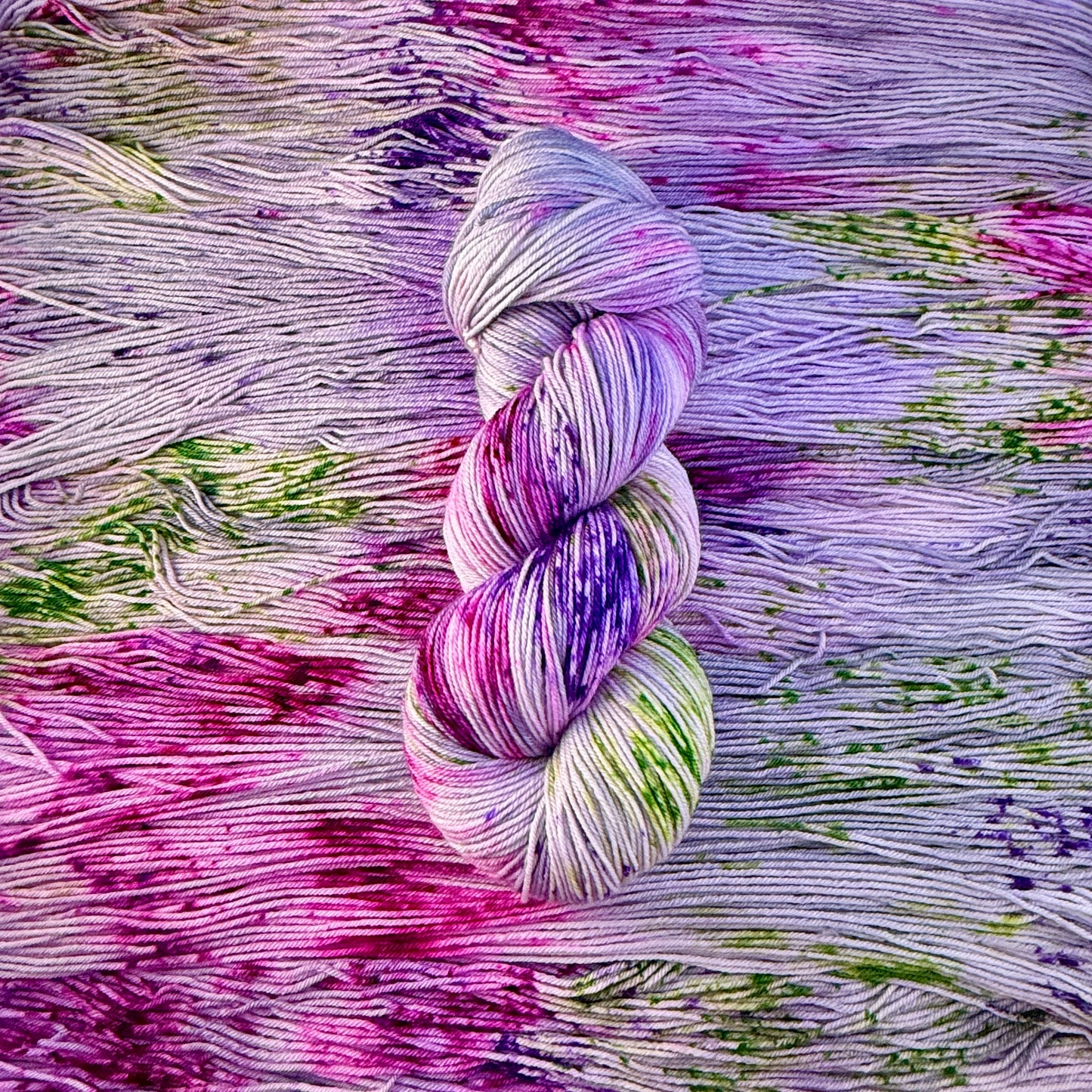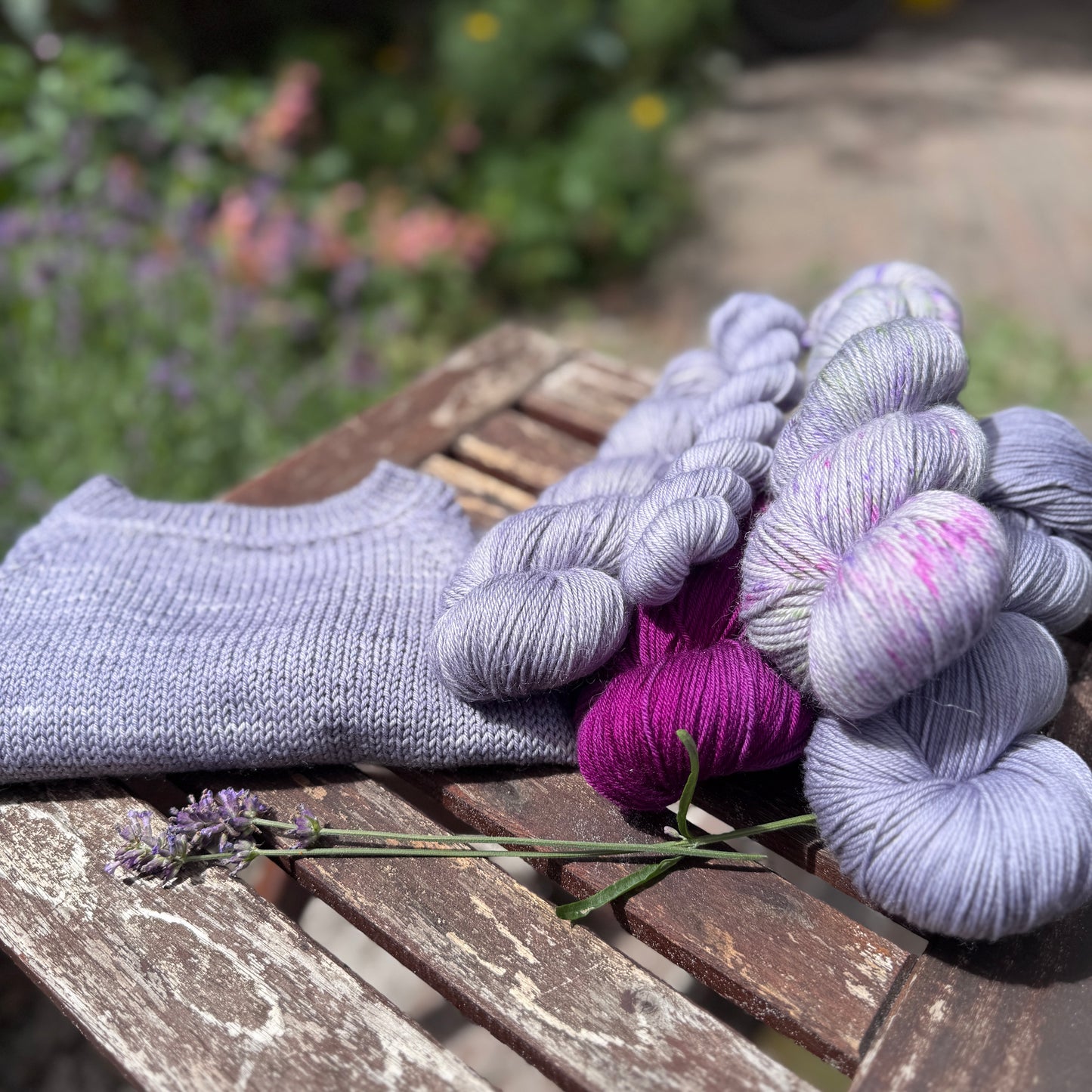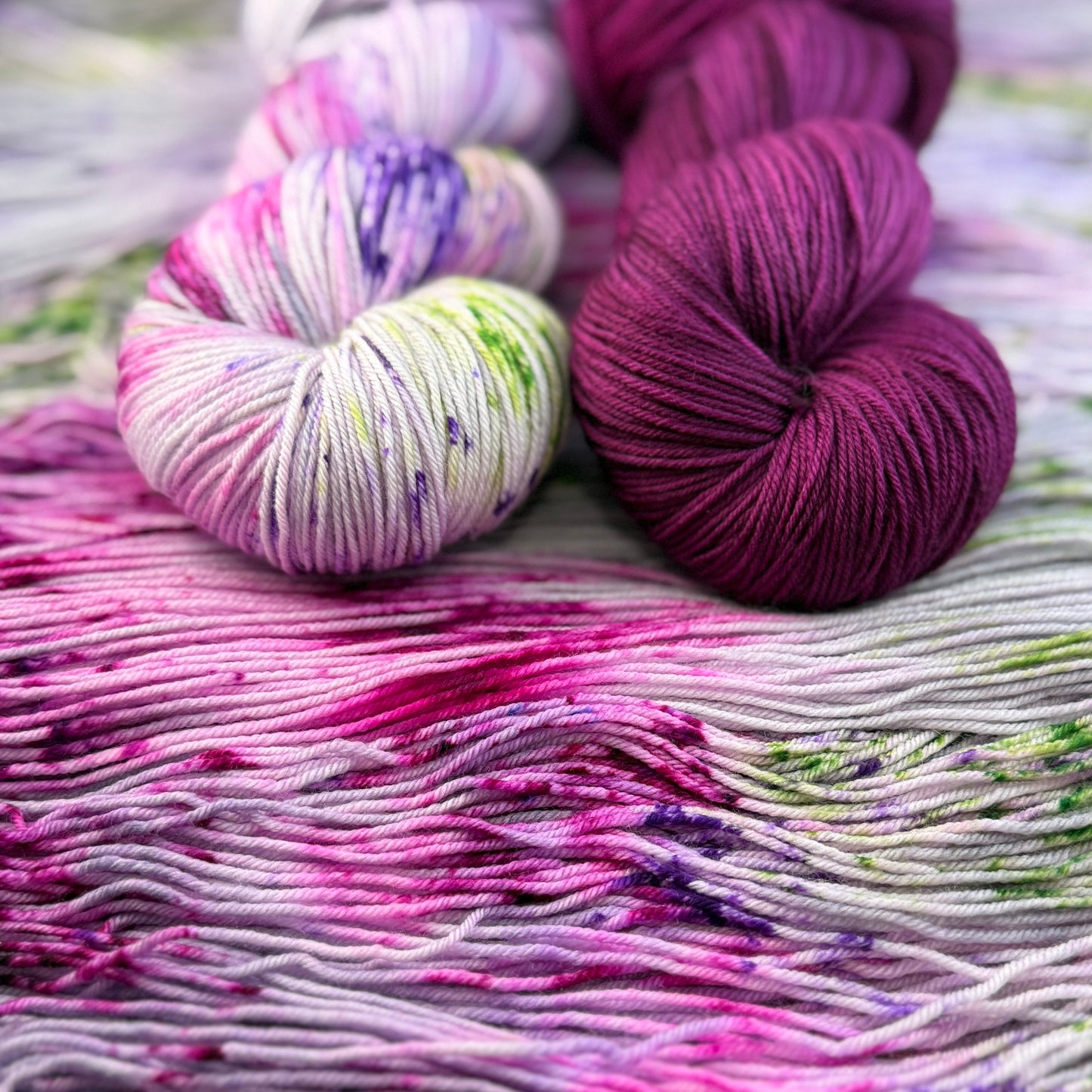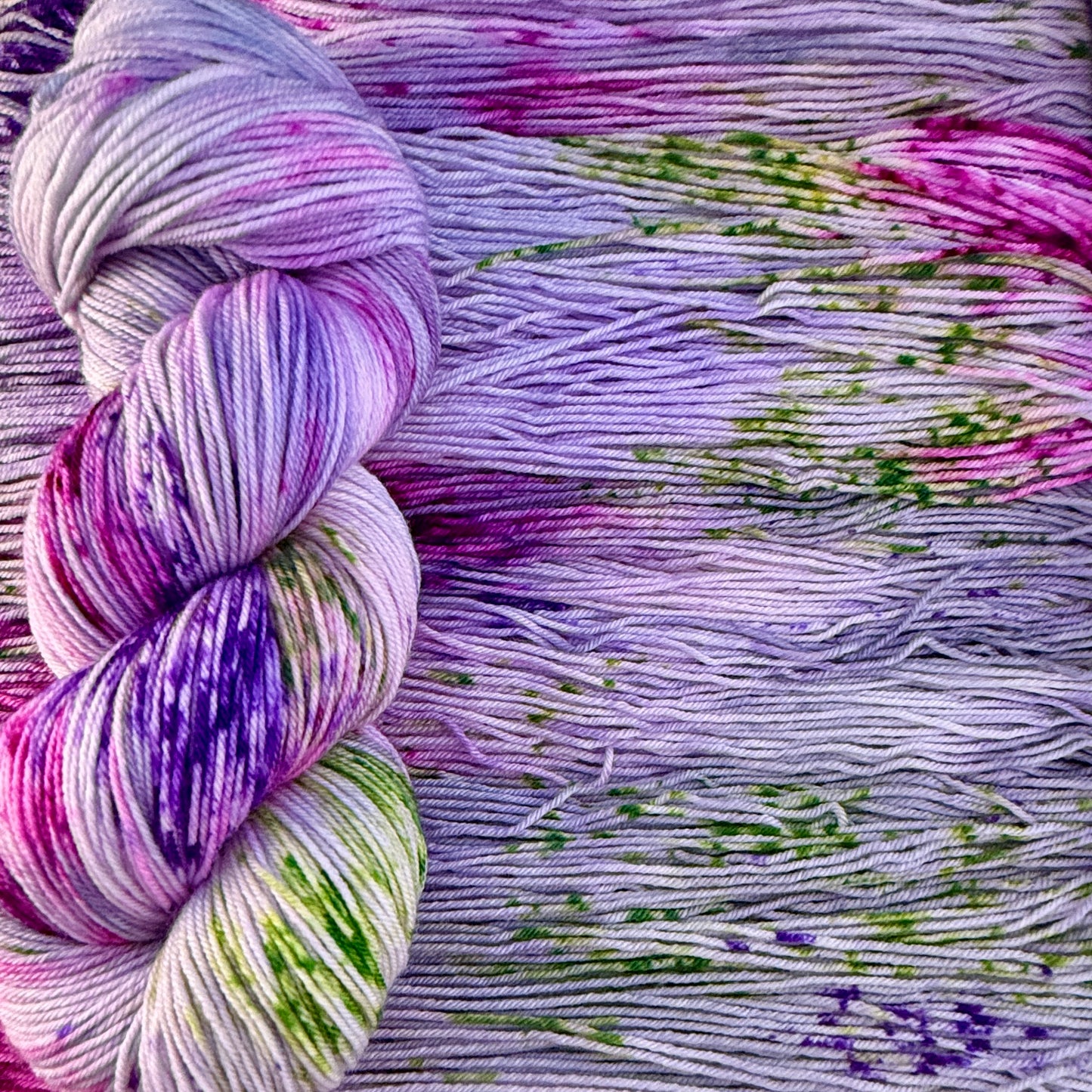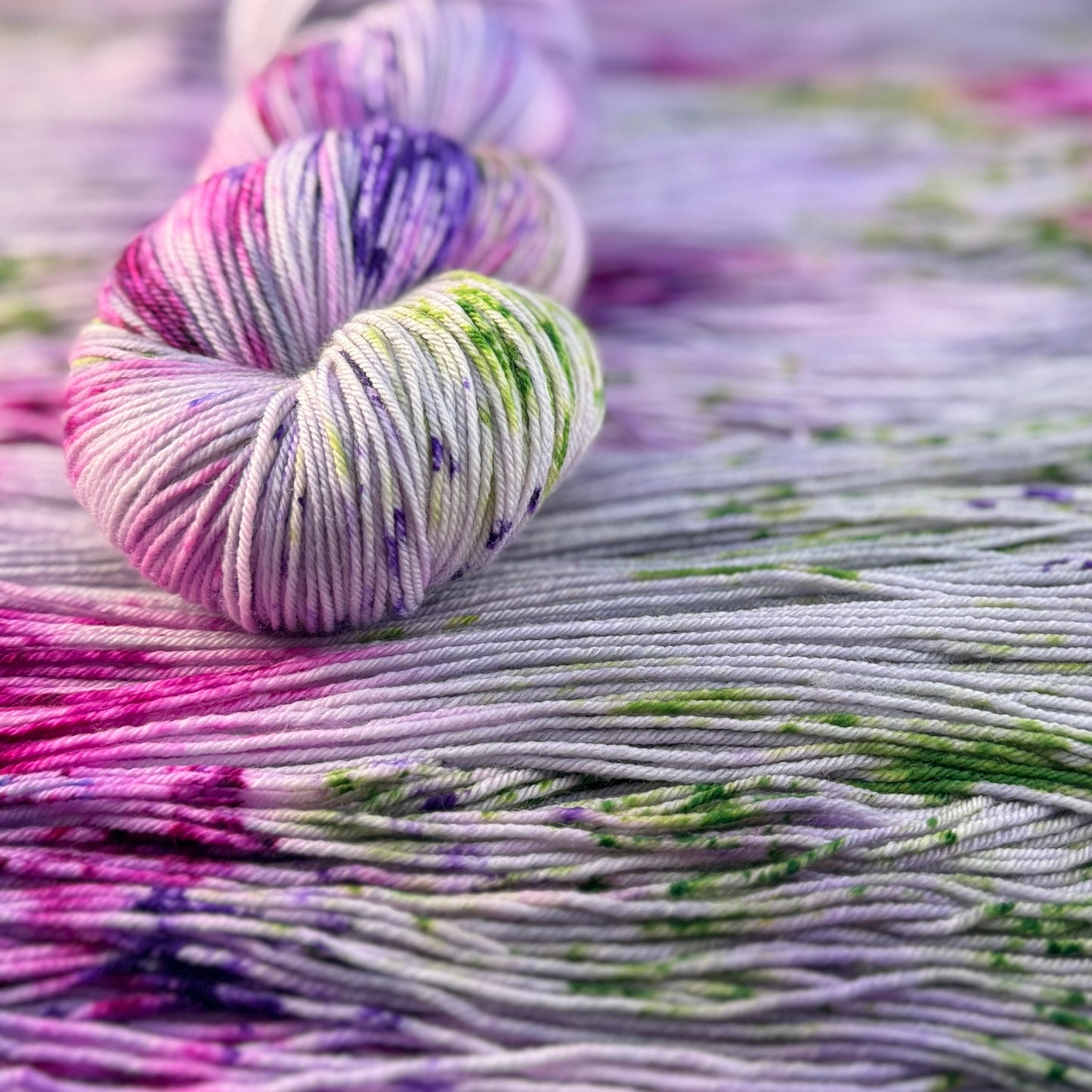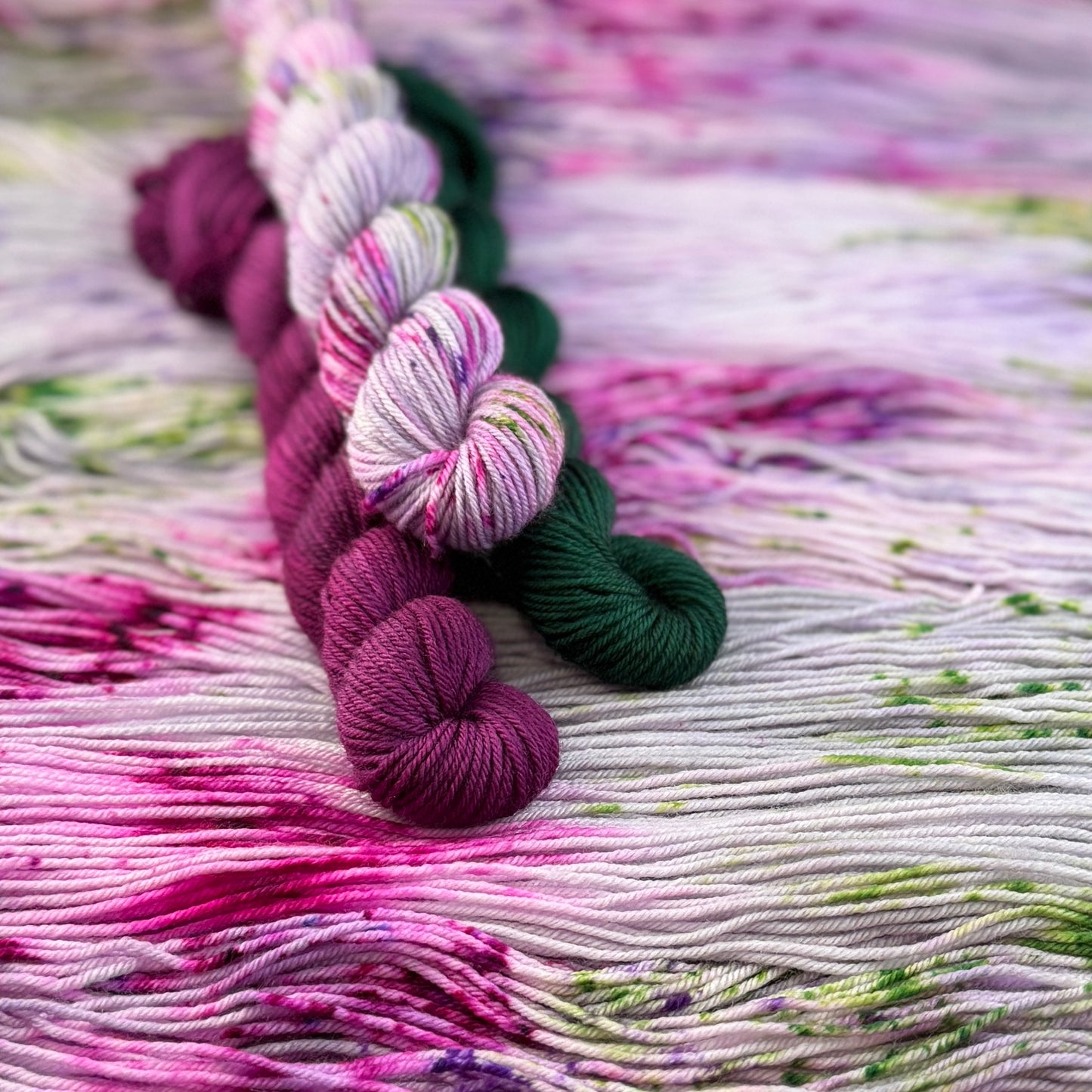Jutland Rhubarb
Jutland Rhubarb
Available bases
Deluxe Merino Sock
Fiber content: 85% Superwash Extrafine Merino Wool, 15% Nylon (19.5 micron)
Weight: Sock/Fingering, 4-plyconstruction
Yardage: Approximately 400 m (437 yards) per 100 g skein (or 80m / 87y per 20g mini)
Origin: Australia (The wool used for this yarn is ethically sourced from non-mulesed sheep.)
Recommended needle/hook size and gauge: Needle size: 2.5 - 4 mm (US 1.5 - 6), Hook size: C - G, Gauge (Stocking stitch): 28 stitches x 36 rows on 10 cm (4 inch) with 3.25 mm (US 3) needles
Alpaca CS Deluxe (this is a non-superwash yarn)
Fiber content: 70% Baby Alpaca 20% Mulberry Silk 10% Cashmere
Weight: DK
Yardage: Approximately 225m (246 yards) per 100g skein
Recommended needle/hook size and gauge: Needle size: 2.5 - 4mm (US 1.5 - 6), Gauge (Stocking stitch): 28 stitches x 36 rows on 10cm (4 inch) with 3.25mm (US 3) needles
Pure Merino
Fiber content: 100% Superwash Extrafine Merino Wool (19.5 micron)
Weight: DK
Yardage: Approximately 200m (219 yards) per 100g strand
Origin: South Africa (The wool used for this yarn is ethically produced from sheep that have not been mulesed.)
Recommended needle/hook size and gauge: Needle size: 3.5 - 4.5mm (US 4-7) Gauge (stocking stitch): 22 stitches x 30 rows on 10cm (4 inch) with 4mm (US 6) needles
Washing instructions
Hand wash with wool detergent, preferably cold. Avoid wringing and twisting. Dry flat, out of direct sunlight. Do not spin or tumble dry.
Warning: Colours may bleed with hand-dyed yarns
Hand-dyed yarns can sometimes 'bleed', especially during the first wash. This is because some dyes can bleed more strongly, especially with intensive shades such as red, blue or black. Although we aim to rinse out excess dye thoroughly, small amounts of dye may remain.
What can you do to reduce color bleeding?
- Always hand wash your knitted or crocheted project in cold water and use a mild wool detergent.
- Add a dash of vinegar or a color catcher to the wash water to catch any color run-through.
- Always wash strong colours separately, especially the first time you wash them.
- Let the project dry flat, out of the sun, to prevent fading.
Pooling and hand-dyed yarns
Our hand-dyed yarns can cause 'pooling' - areas where the same colour collects - due to their unique colouring. To prevent this, alternate between two skeins.
Colors of the yarns in the photo
I do my best to capture the colors of my hand-dyed yarns as accurately as possible in photos. However, it can happen that the colors appear slightly different in real life due to differences in screens or lighting conditions. If you have any doubts about a color or have specific questions, please feel free to contact me!
Couldn't load pickup availability
Low stock: 7 left
